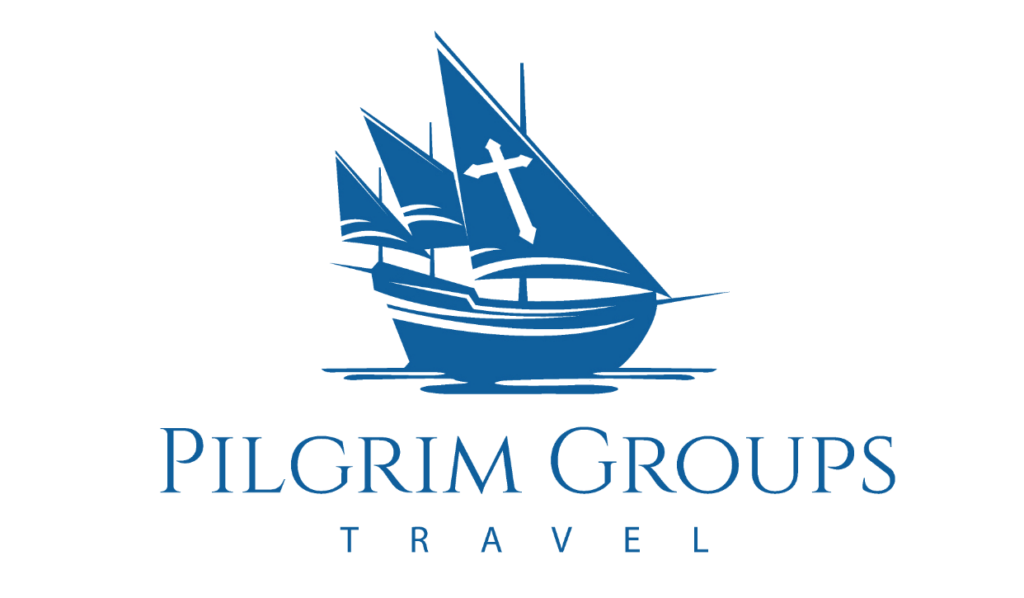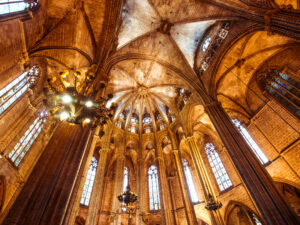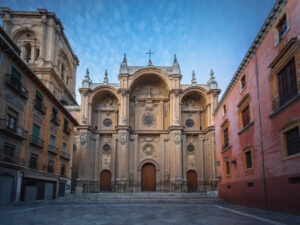Day 1. Starting Point – Madrid (Spain)
After arriving at Madrid airport, we’ll meet our guide and have the opportunity to begin this pilgrimage with a Mass in a prominent temple in the Spanish capital. We’ll have free time to rest or explore the city and become familiar with it before dinner. Transfer to the hotel. Dinner and accommodation.
Day 2. Madrid
Breakfast and departure for our first visits. We’ll start with the Basilica of San Francisco el Grande, one of Madrid’s most important churches, located in the La Latina neighborhood. Built in the 18th century, it’s famous for its large dome, which measures over 33 meters in diameter and is the third largest in Europe after St. Peter’s in Rome and Santa Maria del Fiore in Florence. In addition to its impressive architecture, the basilica houses an important collection of religious art, including paintings by Goya and Zurbarán.
Next, we’ll visit the Almudena Cathedral, the most important church in Madrid and one of Spain’s main Catholic temples. Consecrated in 1993 by Pope John Paul II, it became the first Spanish cathedral consecrated by a pope in over 500 years. The cathedral combines classical architecture with more modern details, and its design pays homage to the neoclassical style. Inside are several chapels, a museum, and a crypt where several bishops and archbishops of Madrid are buried.
Lunch at a local restaurant, followed by a visit to one of Madrid’s most important landmarks, the Monastery of El Escorial. Built in the 16th century by order of King Philip II as a place to bury his father, Charles V, and to serve as the center of religious and political life for the Spanish monarchy. The visit includes the Basilica, where Philip II’s tomb is located, as well as the Library, the Royal Palace, the Pantheon of the Kings, and the Hall of Battles.
Return to the hotel. Dinner and accommodation. Full board, night in Madrid.
Day 3. Madrid – Ávila – Salamanca
Breakfast and departure to Ávila. We’ll enjoy the beautiful landscapes of the Spanish countryside along the way. Upon arrival, we’ll head to the Basilica of San Vicente, an impressive Romanesque church dating back to the 12th century. The basilica houses the relics of the saints Vicente, Sabina, and Cristeta and is considered one of the most important examples of Romanesque architecture in Spain. We’ll continue to the Walls of Ávila, an impressive medieval fortification surrounding the city and considered one of the most complete and best-preserved walled complexes in the world. The city walls are 2.5 kilometers long and have 88 towers and 9 gates, offering a stunning view of the city and its surroundings.
Lunch at a local restaurant, where we can taste typical dishes of the region, such as the famous Chuletón de Ávila, Patatas ‘revolconas’ or Sopa Castellana (Castilian Soup). After lunch, we’ll continue to the Cathedral of Ávila, a beautiful Gothic church built in the 12th century. The cathedral features an impressive façade and a wealth of art and artworks inside, including a sculpture of the Piety by Gregorio Fernández and an image of the Virgin of the Soterraña.
After our visits in Ávila, we’ll continue our journey to the city of Salamanca.
Arrival, dinner, and accommodation. Full board, night in Salamanca.
Day 4: Salamanca
Breakfast and start of our visits to one of the city’s most important monuments, the Salamanca Cathedral: Built between the 12th and 18th centuries, it combines different architectural styles such as Romanesque, Gothic, and Renaissance. Inside, it houses numerous works of art, such as altarpieces, sculptures, and paintings, with notable elements including the main altar, the Chapel of San Martín, and the Chapel of the Virgen del Pilar. We will continue to the Church of the Clerecía, another essential stop on our itinerary. Built in the 17th century, it is one of the most representative buildings of Spanish Baroque, with a facade that is a true work of art, featuring a stone altarpiece depicting scenes from the life of San Francisco de Borja. Inside the church is the Clerecía Tower, which offers one of the most impressive views of the city of Salamanca. From the top of the tower, over 50 meters high, you can admire the historic center of the city, the Cathedral, the Tormes River, and the Béjar mountain range in the background. Additionally, during the visit to the Clerecía, we will also see the Chapel of San Ignacio and the sacristy, with its magnificent altarpieces and works of art.
Lunch at a local restaurant, where we can taste some of the most well-known dishes, such as hornazo, chanfaina, or one of Spain’s most famous gastronomic elements in its highest expression: Guijuelo serrano ham.
We will continue our visit outside one of the oldest educational institutions in the world: The University of Salamanca is one of the oldest and most prestigious educational institutions in Spain, founded in 1218. Its rich history, impressive architecture, and stunning libraries and classrooms make it an almost obligatory visit. We will admire the plateresque facade of the university’s main building, dating from the 16th century and considered one of the most beautiful in Spain. If time permits, we can also explore the Patio de las Escuelas, a beautiful central courtyard surrounded by historic buildings, where the famous frog sculpture, one of the city’s most recognized symbols, is located.
After this visit, transfer to our hotel. Dinner and accommodation. Full board, night in Salamanca.
Day 5: Salamanca – Fátima
Breakfast and continuation to another important point of this Marian Route: Fátima. Arrival and transfer to the Sanctuary of Fátima, one of the most important Marian sanctuaries in the world.
Upon arrival, lunch to taste some of the typical dishes of this region of Portugal, such as Portuguese stew, local cheese, or Tocino de cielo.
In the afternoon, we can participate in all the spiritual activities that take place around the Sanctuary and the Virgin of Fátima on this day, such as starting the Torch Procession and having our first contacts with the Sanctuary.
Dinner and accommodation. Full board, night in Fátima.
Day 6: Fátima
We will have breakfast and approach the Sanctuary of the Virgin of Fátima to visit it in its entirety, including places like the Basilica of Our Lady of the Rosary and the Chapel of the Apparitions. The Basilica of Our Lady of the Rosary is an impressive construction with a wide central nave and two lateral ones. Inside, there is the image of the Virgin of Fátima, as well as the mortal remains of the shepherds Francisco and Jacinta. Additionally, the main altar features a magnificent Portuguese Baroque altarpiece. On the other hand, the Chapel of the Apparitions is a very special place for pilgrims, as it is located in the same spot where the Virgin appeared to the three shepherd children in 1917. Inside, there is the image of the Virgin of Fátima, as well as numerous offerings and objects that faithful believers have left over the years.
Lunch in Fátima.
We will have the opportunity to do the Via Crucis of Fátima, an impressive journey through the Mount of Fátima, where the different stations of the Passion of Jesus Christ are reviewed while praying and meditating on the Rosary, in an incomparable setting compared to almost any other Via Crucis in the world. We will arrive at Aljustrel, the nearby village where the three shepherd children who saw the Virgin Mary in 1917 were born and lived. There, we can visit the Houses of the Shepherds and learn more about their lives.
At the designated time, return to our hotel, dinner, and accommodation. Full board, night in Fátima.




